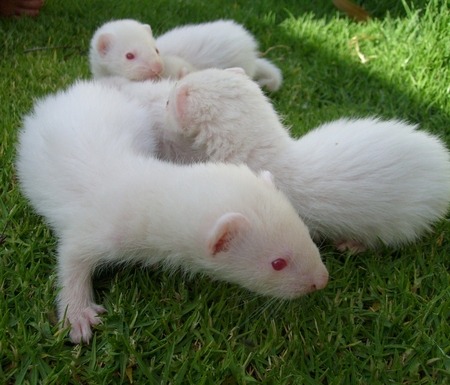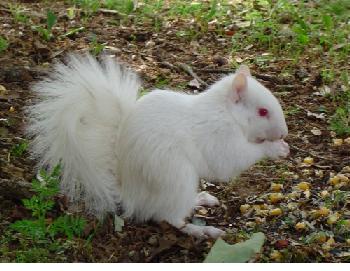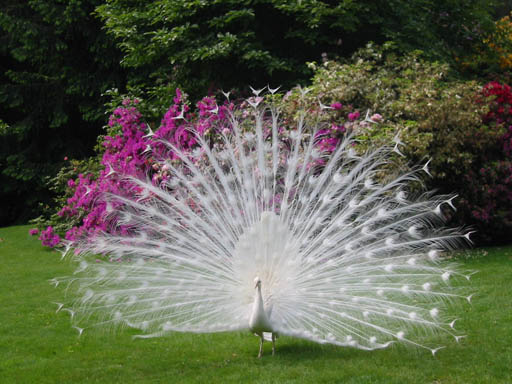|
|
|---|
Wednesday, January 13, 2010
I can't believe I'm writing about garden gnomes! I don't even like garden gnomes! I think they are stupid and they always wear those silly pointy red dunce caps. What's up with that?
Mom didn't used to like garden gnomes either, but then something horrible happened, and she decided maybe they were kind of funny, and that she'd like to have one of her very own. So she bought one on eBay. And his name is something like Gimbrel, but we can never remember what it is for sure.
Anyway, when he got to our house, it was already fall, so he couldn't be out in the garden, on account of he didn't have a very warm coat. So he has been living inside our house with all Mom's plants that she brought inside for the winter. Lucky for Gimbrel, no one has peed on him or knocked him over or anything.
So the other day, when it finally stopped snowing and the sun came out, Mom took Gimbrel outside and took pictures of him in the snow because she thought this would be hilariously funny. Which it sort of was. And today she finally got around to posting the photos on her Facebook page, and she said I could just write about garden gnomes, too. Which is not what I wanted to do, but sometimes you have to do what your mom says to do.
 I did a little research on garden gnomes, just to make this blog entry more interesting. You would not think that there would be anything much to say about this silly subject, but I was surprised to find out that garden gnomes actually have A History, and here's what I learned: The Germans were the first people to make garden gnomes. They started making them in the 19th century, and they called them Gartenzwerg, which is German for "garden dwarf."
I did a little research on garden gnomes, just to make this blog entry more interesting. You would not think that there would be anything much to say about this silly subject, but I was surprised to find out that garden gnomes actually have A History, and here's what I learned: The Germans were the first people to make garden gnomes. They started making them in the 19th century, and they called them Gartenzwerg, which is German for "garden dwarf."

Then in 1847, the garden dwarves started migrating to the United Kingdom, and by the 1930s, they were being called "garden gnomes" in English.
Mostly, garden gnomes are made out of something called terracotta, which is a kind of clay that is molded into the shape of a gnome. Or the shape of a flower pot, or whatever shape you want. But I found this photo of a garden gnome that was carved out of wood.
You can also make a garden gnome out of plastic, but the plastic ones look really cheap and junky, at least in my opinion.
Sometimes people play pranks on garden gnomes, which is called "gnoming." There is even a group called the Garden Gnome Liberation Front. This group believes that garden gnomes deserve the same rights as other people, so members of this group will sometimes liberate gnomes from gardens and return them to the wild. Here is a picture of a bunch of liberated gnomes in Canberra.
Mom didn't used to like garden gnomes either, but then something horrible happened, and she decided maybe they were kind of funny, and that she'd like to have one of her very own. So she bought one on eBay. And his name is something like Gimbrel, but we can never remember what it is for sure.
Anyway, when he got to our house, it was already fall, so he couldn't be out in the garden, on account of he didn't have a very warm coat. So he has been living inside our house with all Mom's plants that she brought inside for the winter. Lucky for Gimbrel, no one has peed on him or knocked him over or anything.
So the other day, when it finally stopped snowing and the sun came out, Mom took Gimbrel outside and took pictures of him in the snow because she thought this would be hilariously funny. Which it sort of was. And today she finally got around to posting the photos on her Facebook page, and she said I could just write about garden gnomes, too. Which is not what I wanted to do, but sometimes you have to do what your mom says to do.
 I did a little research on garden gnomes, just to make this blog entry more interesting. You would not think that there would be anything much to say about this silly subject, but I was surprised to find out that garden gnomes actually have A History, and here's what I learned: The Germans were the first people to make garden gnomes. They started making them in the 19th century, and they called them Gartenzwerg, which is German for "garden dwarf."
I did a little research on garden gnomes, just to make this blog entry more interesting. You would not think that there would be anything much to say about this silly subject, but I was surprised to find out that garden gnomes actually have A History, and here's what I learned: The Germans were the first people to make garden gnomes. They started making them in the 19th century, and they called them Gartenzwerg, which is German for "garden dwarf." 
Then in 1847, the garden dwarves started migrating to the United Kingdom, and by the 1930s, they were being called "garden gnomes" in English.
Mostly, garden gnomes are made out of something called terracotta, which is a kind of clay that is molded into the shape of a gnome. Or the shape of a flower pot, or whatever shape you want. But I found this photo of a garden gnome that was carved out of wood.
You can also make a garden gnome out of plastic, but the plastic ones look really cheap and junky, at least in my opinion.
Sometimes people play pranks on garden gnomes, which is called "gnoming." There is even a group called the Garden Gnome Liberation Front. This group believes that garden gnomes deserve the same rights as other people, so members of this group will sometimes liberate gnomes from gardens and return them to the wild. Here is a picture of a bunch of liberated gnomes in Canberra.
Well, that's all I can think of to say about this dumb subject. I just hope that Mom is satisfied and that she will let me talk about stuff I want to talk about after this. And also I hope she won't start collecting garden gnomes. We barely have room for the flowers in our garden, let alone for a bunch of grumpy-looking old men with pointy hats.
0 Comments:
Subscribe to:
Post Comments (Atom)



















